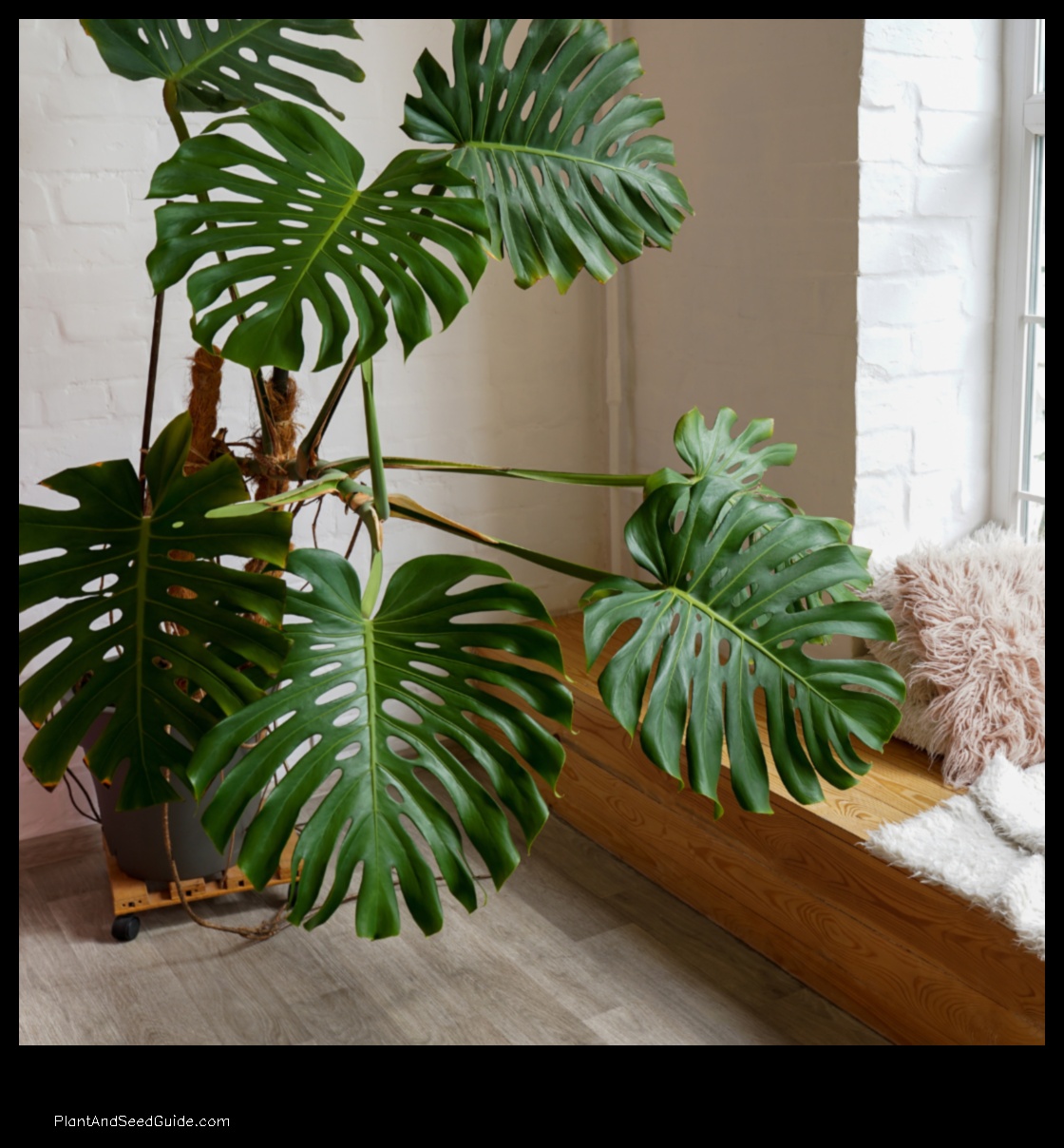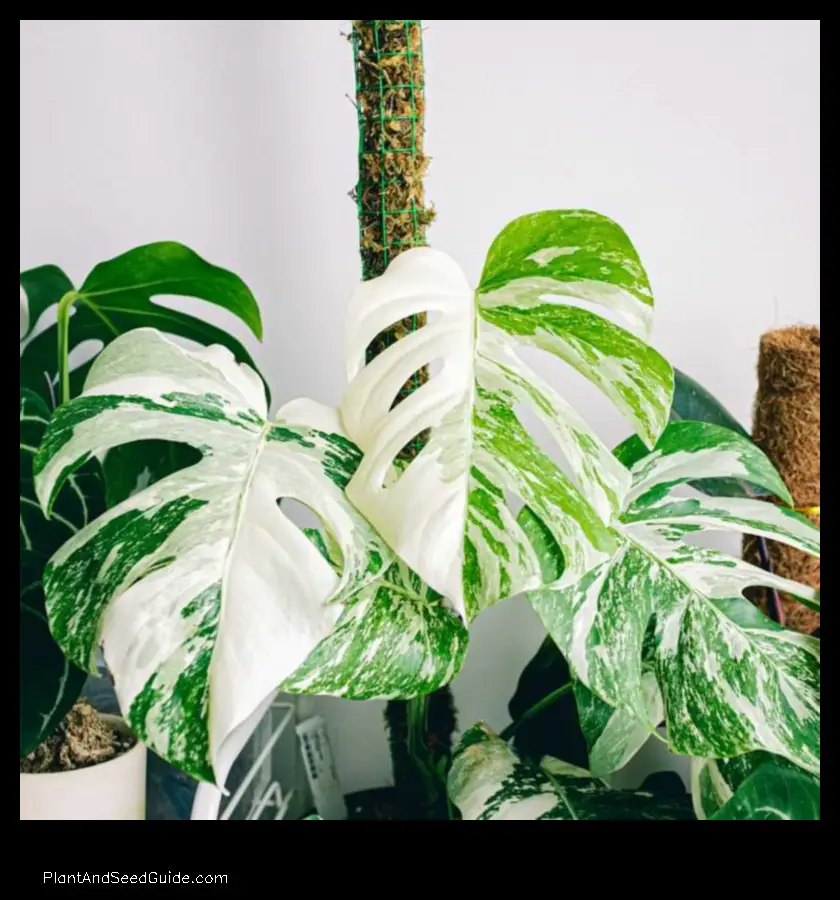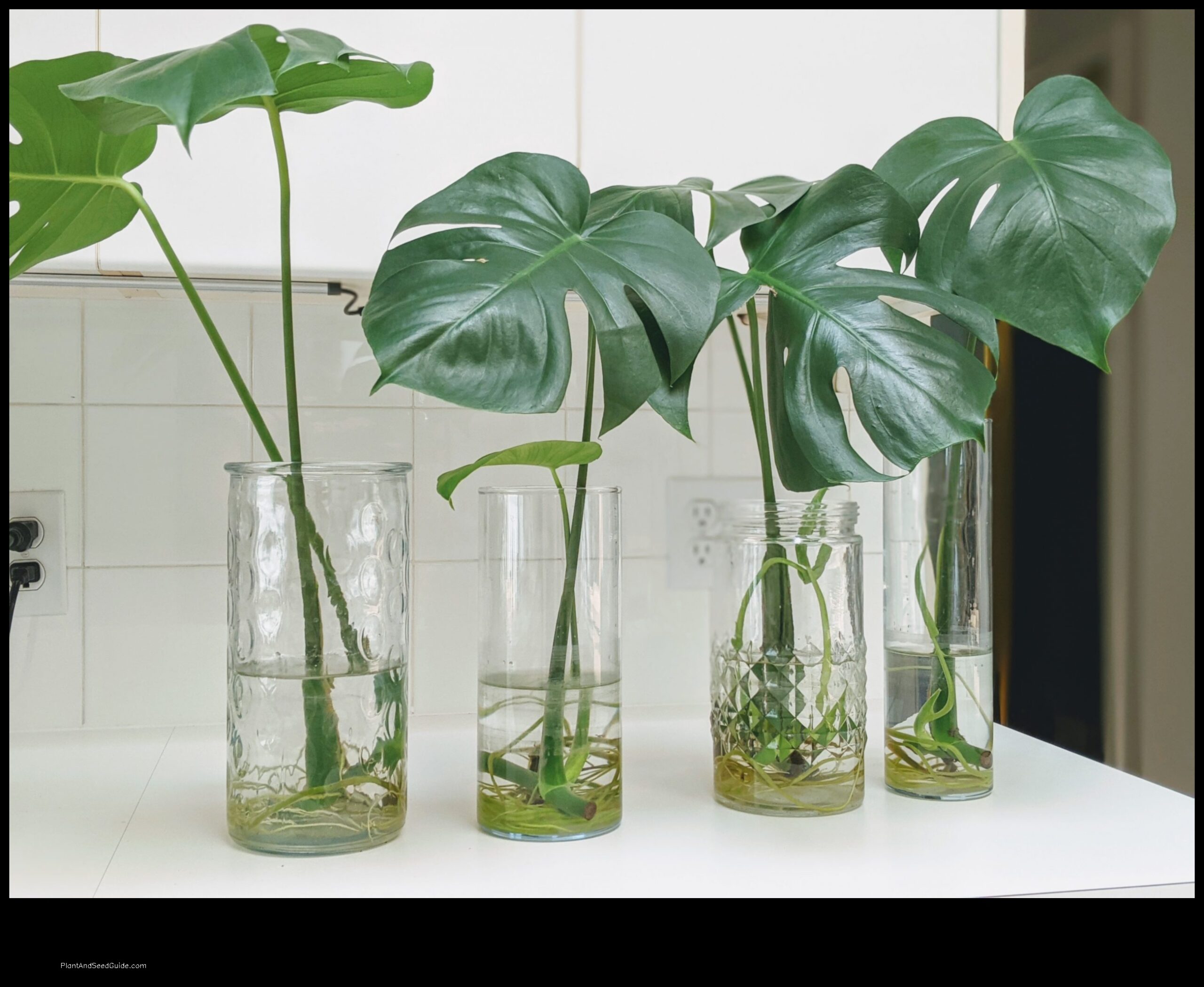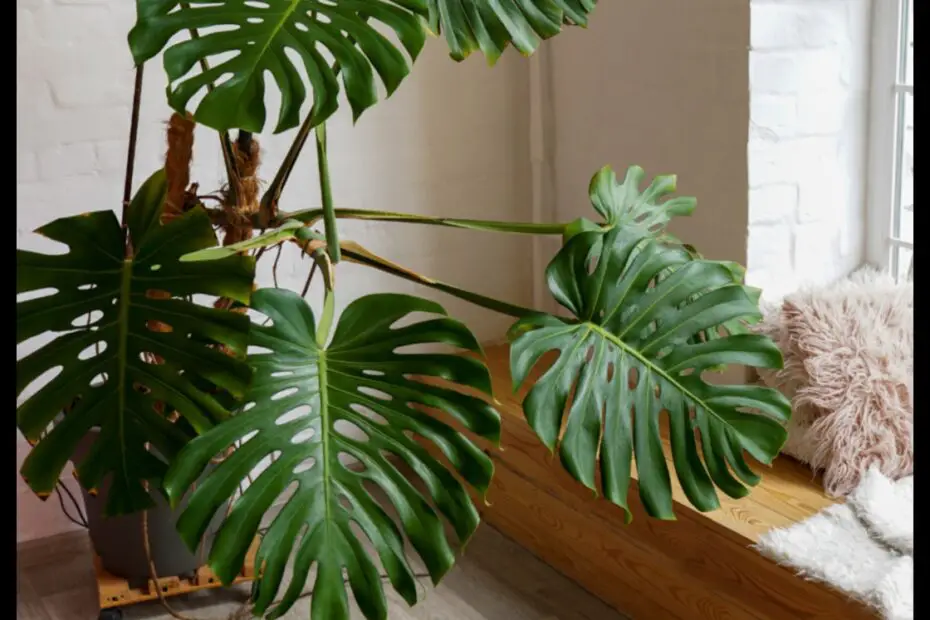
How to Save Monstera Plant
This article will teach you how to save a monstera plant that is dying or struggling.
Symptoms of a Dying Monstera
- Yellowing leaves
- Brown spots on leaves
- Wilting leaves
- Root rot
Causes of a Dying Monstera
- Not enough water
- Too much water
- Not enough light
- Pests or diseases
How to Save a Dying Monstera
- Check the soil moisture. If the soil is dry, water the plant thoroughly.
- Check the drainage holes. If the drainage holes are clogged, clear them out.
- Move the plant to a brighter location.
- Treat the plant for pests or diseases.
Ste
p 1: WateringMonstera plants need to be watered regularly, but they should not be overwatered.
To check if your monstera plant needs water, stick your finger into the soil. If the soil is dry to the touch, it is time to water the plant.
When you w
ater your monstera plant, water it thoroughly until the water comes out of the drainage holes.Step 2: Light
Monstera plants need bright indirect light.
If your mo
nstera plant is not getting enough light, it will start to yellow and wilt.To give your monstera plant more light, move it to a brighter location.
Step 3: Soil
Monstera p
lants do best in a well-draining soil.A good soil mix for monstera plants will be made up of equal parts potting soil, perlite, and sand.
Step 4: Fertilizer
Monstera p
lants need to be fertilized regularly, but they should not be overfertilized.To fertilize your monstera plant, use a balanced fertilizer once a month during the growing season.
Step 5: Pests and diseases
Monstera p
lants can be susceptible to pests and diseases.Some common pests that attack monstera plants include mealybugs, aphids, and spider mites.
Some common diseases that affect monstera plants include root rot, leaf spot, and powdery mildew.
If you thi
nk your monstera plant is infested with pests or diseases, treat it with a suitable pesticide or fungicide.FAQ
- Q: My monstera plant is yellowing. What should I do?
- A: If your monstera plant is yellowing, it is likely not getting enough water. Water the plant thoroughly and make sure that the soil is draining well.
- Q: My monstera plant is wilting. What should I do?
- A: If your monstera plant is wilting, it is likely not getting enough water or light. Water the plant thoroughly and move it to a brighter location.
- Q: My monstera plant has brown spots on the leaves. What should I do?
- A: If your monstera plant has brown spots on the leaves, it is likely being attacked by a pest or disease. Treat the plant with a suitable pesticide or fungicide.
<
| Feature | Answer |
|---|---|
| Monstera | A tropical plant native to Central and South America |
| Monstera care | Needs bright, indirect light, moist soil, and regular watering |
| Monstera deliciosa | A popular variety of monstera, known for its large, split leaves |
| Monstera problems | Can be affected by pests, diseases, and underwatering or overwatering |
| Monstera diseases | Can include leaf spot, root rot, and bacterial leaf blight |

ISymptoms of a dying monstera
There are a few different symptoms that can indicate that a monstera plant is dying. These include:
The leaves are turning yellow or brown.
The leaves are wilting or drooping.
The leaves are curling or twisting.
The plant is not producing new leaves.
The plant is losing its roots.
The plant is starting to smell bad.
If you noti
ce any of these symptoms, it is important to take action to save your monstera plant.Causes of a dying monstera
There are a number of possible causes of a dying monstera plant, including:
- Not getting enough light
- Not getting enough water
- Being attacked by pests or diseases
- Being overwatered
- Being underwatered
How to save a dying monstera
If you think your monstera is dying, there are a few things you can do to try to save it.
-
Check the watering.
The best way to check if your monstera needs water is to stick your finger into the soil. If the soil is dry to the touch, it’s time to water your plant.Monsteras are susceptible to overwatering, so it’s important to make sure that you’re not watering them too much..
- Check the light. Monsteras need bright, indirect light to thrive. If your monstera is not getting enough light, it will start to droop and its leaves will turn yellow. Move your monstera to a spot where it will get more light.
-
Check
the soil. Monsteras prefer a well-draining soil that is rich in organic matter. If your monstera’s soil is too dense or compacted, it will not be able to drain properly and your plant will start to rot. Re-pot your monstera in a pot with fresh, well-draining soil. -
Check for pests and diseases.
If you think your monstera is infested with pests, you can treat it with a neem oil solution or insecticidal soap. If you think your monstera has a disease, you can treat it with a fungicide.Monsteras can be susceptible to a variety of pests and diseases, such as aphids, mealybugs, and spider mites..


